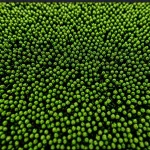How Color Psychology Shapes Our Experiences at Home
Color psychology explores how different hues affect our feelings and behaviors, making it a crucial factor in interior design. By understanding the emotional impact of colors, homeowners can consciously select palettes that foster positive moods and enhance daily living.
For instance, blue is often associated with calmness and relaxation, making it ideal for bedrooms or meditation spaces. On the other hand, yellow interiors tend to evoke happiness and energy, encouraging social interaction and creativity. These associations demonstrate how mood and color interactions influence not only aesthetics but also our emotional well-being.
In the same genre : Ways to Enhance Your Living Room with Smart Technology
Choosing colors is more than just visual preference—it directly affects mental state. Warm colors like reds and oranges can stimulate excitement or passion, while cool tones such as green and lavender soothe and reduce stress. Leveraging color psychology allows for intentional environments tailored to support comfort, productivity, or rest.
By integrating these insights into home design, you can create spaces that genuinely respond to your emotional needs. Thoughtful color use enhances the overall atmosphere, promoting a healthier, more enjoyable living experience.
Also read : What Are the Key Considerations for Renovating a UK Period Property?
How Color Psychology Shapes Our Experiences at Home
Color psychology plays a vital role in how we perceive and feel within our home environments. By understanding the emotional impact of colors, homeowners can intentionally create atmospheres that promote comfort, energy, or relaxation. For example, blues tend to evoke calmness and serenity, making them ideal for bedrooms or quiet spaces. Conversely, yellows often stimulate cheerfulness and creativity, brightening kitchens or social areas.
Mood and color associations are deeply rooted in human psychology. Warm hues like red or orange often boost adrenaline and excitement, while cool shades such as lavender and green soothe and lower stress. These emotional responses to color influence our overall well-being, affecting sleep quality, productivity, and daily happiness.
In interior design, leveraging this knowledge allows for creating spaces that not only reflect personal taste but also support desired emotional states. Thoughtful color choices can transform ordinary rooms into retreats tailored for relaxation or invigorating activity. Understanding the science behind color psychology empowers homeowners to design environments that enhance their mental and emotional health in meaningful ways.
Key Color Schemes and Their Emotional Effects
Understanding color psychology helps explain why certain hues evoke specific feelings. Calming colors like blue, green, and lavender are staples in interior design for their soothing influence. A blue interior often promotes tranquility and focus, making it a favorite for bedrooms or workspaces. Green interiors connect us to nature, providing a sense of balance and renewal, while lavender adds gentle relaxation.
On the opposite spectrum, energizing colors such as yellow, orange, and red stimulate activity and optimism. A yellow interior can brighten moods and spark creativity, perfect for social or creative areas. Orange encourages enthusiasm and warmth, while red commands attention and passion.
Neutral tones, including white, grey, and beige, act as mood balancers. These shades support peacefulness without overwhelming the senses, allowing bold colors to shine or providing restful background hues.
Choosing the right interior colors means weighing their emotional impact on daily life. Thoughtfully applied, these color schemes can shape your home into a place that either gently calms or energetically uplifts, demonstrating the powerful mood and color associations at play in effective design.
How Color Psychology Shapes Our Experiences at Home
Color psychology is the study of how hues influence human emotions and behaviors, a concept deeply relevant to interior design. Understanding the emotional impact of colors helps homeowners create environments that support specific moods and activities. For instance, mood and color associations reveal that cool colors such as blues and greens often foster serenity and relaxation. These hues can lower heart rates and reduce stress, making them effective choices for bedrooms or calm spaces.
Conversely, warm colors like reds, oranges, and yellows tend to evoke energy and enthusiasm. Their emotional stimulus can enliven social areas or creative zones by increasing excitement and optimism. However, the psychological response to color also depends on personal experiences and cultural meanings, showing that color psychology is not universal but adaptable.
The influence of interior colors on overall well-being is profound. Well-chosen palettes can improve sleep, boost productivity, and enhance happiness by aligning the home’s visual atmosphere with desired emotional states. Awareness of these dynamics equips homeowners to design living spaces that do more than just look appealing—they actively promote emotional comfort and balance.
How Color Psychology Shapes Our Experiences at Home
Color psychology profoundly influences how we interact with our home environments. By understanding the emotional impact of colors, homeowners can intentionally design spaces that support well-being and mood regulation. For example, knowing that certain hues evoke calmness or energy allows for more purposeful decoration decisions.
The relevance of color psychology to interior design lies in these universal mood and color associations, which shape our feelings in subtle but effective ways. Blue interiors commonly induce serenity and focus, making them suitable for restful or work areas. Meanwhile, yellow interiors boost optimism and creativity, ideal for lively spaces like kitchens or family rooms. These choices are not arbitrary—they engage the brain’s emotional centers tied to color perception.
Furthermore, the influence of color reaches beyond aesthetics to impact overall well-being. Colors that promote relaxation can improve sleep quality, while those that energize can increase motivation and social interaction. Harnessing this knowledge helps create environments that nurture mental health and enhance everyday experiences, reinforcing the importance of thoughtful color use in home design.
How Color Psychology Shapes Our Experiences at Home
Color psychology examines how colors influence human emotions and behavior, making it a vital tool in interior design. The emotional impact of colors guides how spaces make us feel, shaping our daily experiences at home. For example, mood and color associations reveal that cool tones like blue and green often induce calmness and relaxation. A blue interior can reduce stress, promote focus, and foster tranquility, making it ideal for bedrooms or offices.
In contrast, warm colors such as yellow and red tend to energize and uplift. A yellow interior stimulates happiness and creativity, frequently used in kitchens or living rooms to encourage social interaction. These color choices directly affect our well-being by influencing moods, productivity, and even sleep quality.
Understanding the nuanced relationships within color psychology enables homeowners to create spaces that align with their emotional needs. Selecting interior colors based on their psychological effects can transform a home into a supportive environment that enhances comfort, vitality, or relaxation. This thoughtful approach harnesses the power of mood and color associations to improve everyday emotional health.









